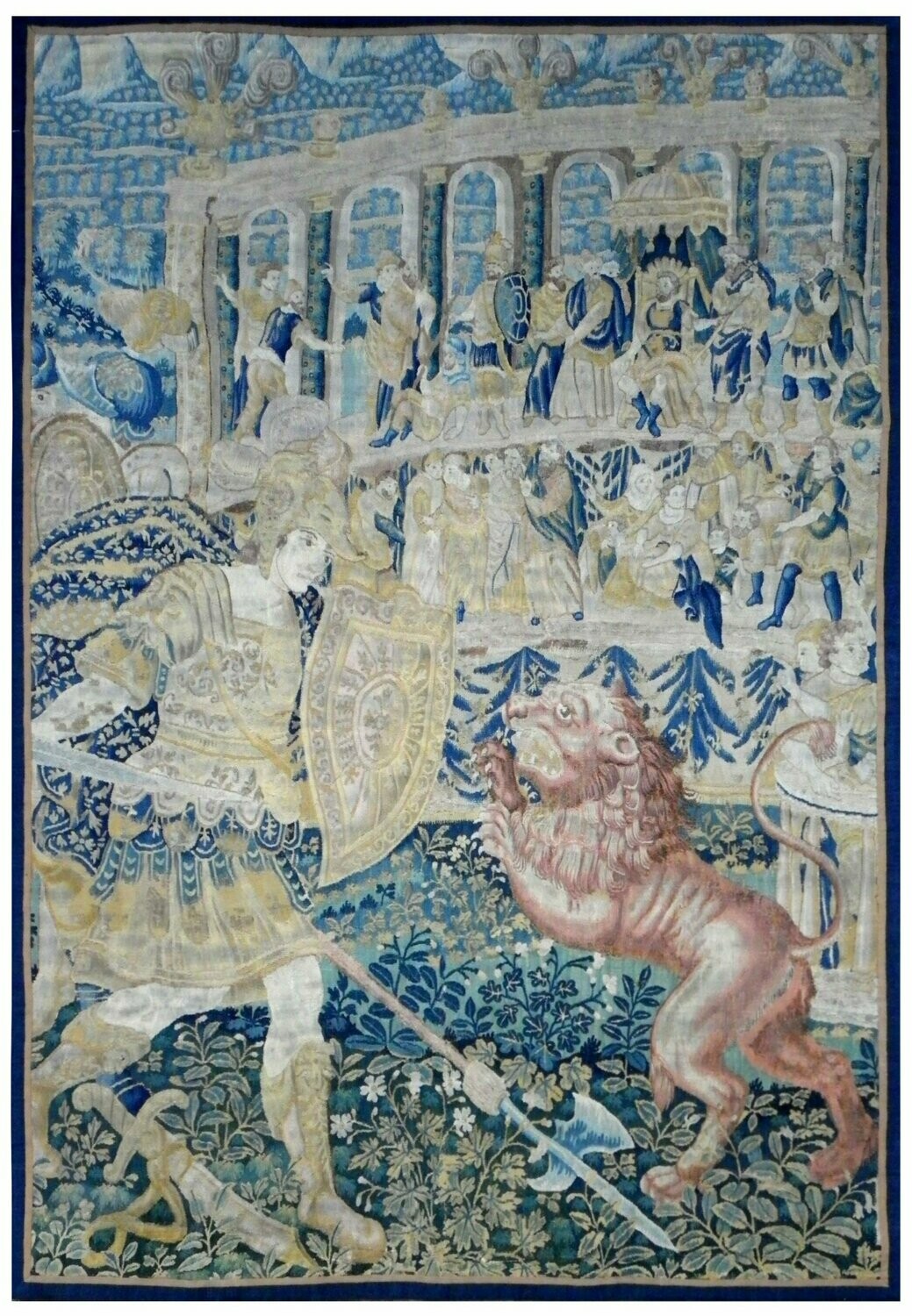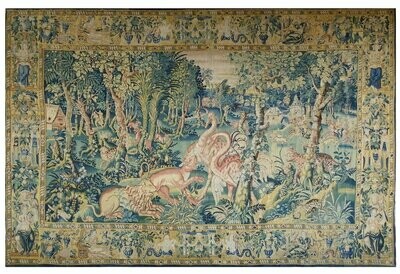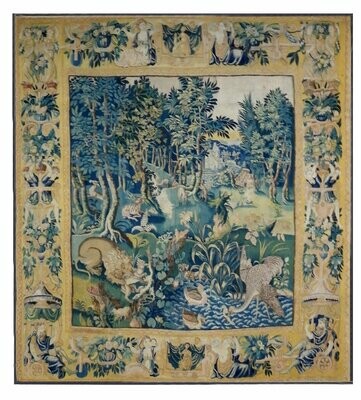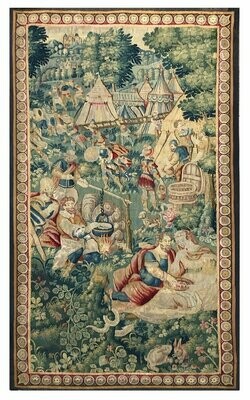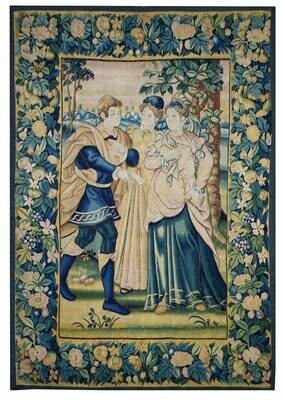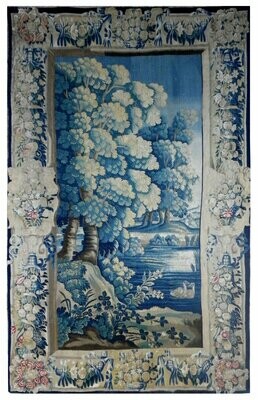Flemish Tapestry - 17th - Dimention:2.40Hx1.60L
€0.00
In stock: 1 available
Product Details
Reference number :78J/ 2754
Origin : Flanders-Audenarde
Period: 17th century
Provenance :Private Collection
Composition: Wool and silk
Dimension: 1.60 L x 2.40 H
BIOGRAPHY OF CONSTANTIN IER THE GREAT-
Roman Emperor from 306 to 337. Constantine I the Great was born on 17 February 270 in Nish (Serbia). He died on May 22, 337 in Ancyrona, near Nicomedia (Asia Minor). He allowed Christianity to develop and chose Constantinople to be the capital of his empire.
Flavius Valerius constantinus was born of Constance Chlorine and St. Helena. At the death of his father, he was proclaimed Emperor by the army (306). In 312, he won a great victory against Maxentius, his Italian opponent, and shared the Roman territories with Licinius, his sister's husband. Convinced that he had emerged victorious thanks to the help of Christ, he promulgated the Edict of Milan, which granted tolerance to Christians. The kingdom was endangered by the emerging conflicts between Constantine and Licinius. It was finally the first who defeated the second in 324, thus unifying the empire. Following in Diocletian's political wake, Constantine the Great reorganized the administration. Supporting the Church more and more, he convened the Ecumenical Council of Nicea. However, his conversion to Christianity was not immediate. He is also concerned about the construction of his new capital, Constantinople. Built on the site of Byzantium, it was completed in 330. Constantine was only baptized on his deathbed on May 22, 337.
The hanging of Constantine's History includes a number of subjects and was first woven by the Parisian workshops of François de La Planche and Marc de Comans after Peter Paul Rubens, a diplomatic gift from Louis XIII to Cardinal Barberini in 1625.
The Parisian workshops weave the themes covered by Rubens: "Constantine's Entry into Rome", "Constantine's Marriage", "The Battle of the Milvius Bridge", "Constantine's Baptism", "Constantine and the True Cross", "Constantine Erecting Constantinople", "The Death of Constantine".
But the cardinal, nephew of Pope Urban VIII, commissioned five other episodes from the Barberini manufactory, for which he called on Pierre de Cortone (Pietro Berretini of the city of Cortona) to draw them. "Constantine fighting the lion" is one of the episodes he performed around 1636-1638. The other subjects are: "Constantine ordered the destruction of pagan idols", "The naval battle of Constantine and Licinius", "The Appearance of the Cross" and "Constantine burnt the idols".
Our tapestry is an interpretation for the Flemish workshops probably based on Pierre de Cortone.
This lion theme is an allegory of invincible strength and courage. It originated in Persia, imported into the West by Alexander the Great, then popularized in Rome through the "Works of Hercules" and in particular the "Lion of Nemea" and from which Cortona is said to have drawn inspiration.
In the Barberini hanging, Constantine, the first Christian emperor, represents, according to some hypotheses, Pope Urban VIII.
James II Geubels was active from 1621, the date on which he took over from his father. Upon his death in 1633, his widow continued the activity of the workshop, which often collaborated with the workshop of Jan II and Jan III Raes.
Bibliography :
Guy Delmarcel. Flemish tapestry.1999.
Thomas Campbell: Tapestry in the Baroque. The Metropolitan Museum of Art, New York, 2008.p.304.
"The Story of Constantine the Great. Philadelphia Museum of Art, United States.
Save this product for later
You May Also Like
Display prices in:
EUR


